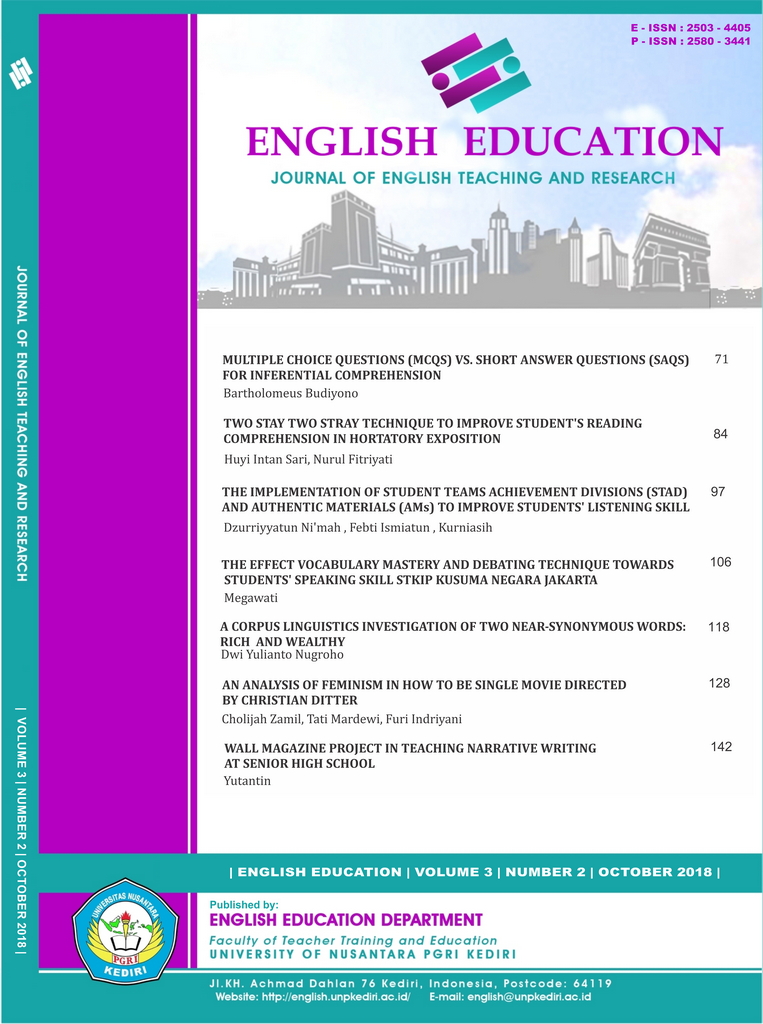WALL MAGAZINE PROJECT IN TECHING NARRATIVE WRITING AT SENIOR HIGH SCHOOL
DOI:
https://doi.org/10.29407/jetar.v3i2.12547Abstract
Project-Based Learning (PjBL) is one of the suggested models of teaching in 2013 curriculum which offers more chance for students to gain the knowledge and experience through the project. This study investigated the ways teacher employed PjBL in teaching narrative writing, students’ responses and the result of the students’ writing at senior high school. Interview, observation, and documentation were employed to obtain the data. The results showed that the teacher applied the teaching and learning based on the suggested steps of PjBL coherently with different portion of stressing. Besides that, the students’ gave positive responses which produced some learning improvement issues; creating positive environmental learning, fostering group cohesiveness, encouraging self-potential learning, enrich students’ writing ability, and enhancing students’ independent learning. Accordingly, students’ group work discussion had effectively enhanced their writing ability. In addition, students could also create the appropriate wall magazine based on the criteria of informing and entertaining requirements. This study recommended the teacher conduct the writing drills before coming to the intended project of writing and compromise with other teachers related to the time management in giving the project to the students. Other researchers were needed to investigate the implementation of PjBL on other area of skills with deeper investigation to get deeper responses.
Keywords: Project-Based Learning, Narrative Text, and Students’ Response
Downloads
Downloads
Published
Issue
Section
License
Authors who publish with this journal agree to the following terms:
- Copyright on any article is retained by the author(s).
- The author grants the journal, the right of first publication with the work simultaneously licensed under a Creative Commons Attribution License that allows others to share the work with an acknowledgment of the work’s authorship and initial publication in this journal.
- Authors are able to enter into separate, additional contractual arrangements for the non-exclusive distribution of the journal’s published version of the work (e.g., post it to an institutional repository or publish it in a book), with an acknowledgment of its initial publication in this journal.
- Authors are permitted and encouraged to post their work online (e.g., in institutional repositories or on their website) prior to and during the submission process, as it can lead to productive exchanges, as well as earlier and greater citation of published work.
- The article and any associated published material is distributed under the Creative Commons Attribution-ShareAlike 4.0 International License








 Article template
Article template



